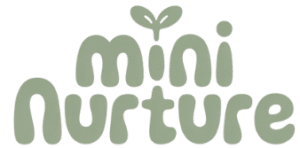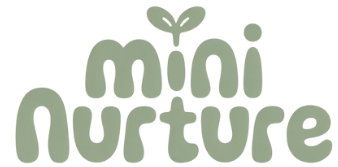Caring for a newborn’s hair might seem simple, but it requires gentle and thoughtful attention. Newborn hair and scalp are very delicate, so using mild products and soft techniques is key to keeping them healthy.
Understanding these basics helps parents avoid common problems like dryness, irritation, or hair loss.

Newborn hair can look different at birth and often changes over the first year, which is normal. Knowing how to properly wash, brush, and protect baby hair ensures it stays soft and grows well.
Proper care also helps soothe the scalp, preventing discomfort and conditions like cradle cap.
Key Takeaways
- Newborn hair needs gentle care with safe, mild products.
- Hair and scalp change naturally during the first year.
- Regular, careful routines help maintain healthy hair and scalp.
Understanding Newborn Hair and Scalp

Newborn hair varies a lot in how it looks and grows. Their scalp is very sensitive and needs gentle care to stay healthy.
It’s normal for babies to lose some hair in the first few months as new growth begins.
Types and Characteristics of Newborn Hair
Newborn hair can differ widely in color, texture, and thickness. Some babies are born with fine, soft hair, while others may have thicker, curlier strands.
Hair color can also range from light blond to dark brown or black. The hair’s texture and density are often influenced by genetics.
Newborn hair is delicate and tends to be softer than adult hair. It is important not to use harsh shampoos or vigorous scrubbing, which can irritate the scalp.
The scalp’s skin is thinner and more sensitive than adult skin, making it prone to dryness or flaking if not cared for gently. Regular gentle cleaning helps maintain a healthy scalp without stripping natural oils.
Common Hair Growth Patterns
Babies often experience several different hair growth phases in their first year. Initially, the hair they’re born with may fall out.
New hair usually grows back thicker and sometimes a different color or texture. Hair growth patterns vary for each baby.
Some get a full head of hair quickly, while others take months or even a year to develop a noticeable amount. Hair may grow unevenly, creating patches or soft spots.
Parents should expect some variability and avoid trying to force hair growth. Gentle washing and scalp massages can help keep the scalp healthy and encourage natural growth.
Normal Hair Loss in Early Months
It is common for newborns to lose much of their hair in the first two to three months after birth. This shedding is called telogen effluvium and happens as the hair cycle resets after birth.
Hair loss often appears as thinning or bald patches and usually isn’t a sign of an underlying problem. The scalp might show flakes or mild dryness during this time, which can be relieved with gentle shampooing.
New hair generally starts growing back around three to six months old, often stronger. Monitoring the scalp for irritation and avoiding harsh products is key to maintaining a healthy scalp while hair regrows.
For more detailed guidance, see newborn hair care tips at Happiest Baby or Schweiger Dermatology Group.
Essential Hair Care Practices

Caring for a newborn’s hair means being gentle and consistent with daily routines. Proper washing, using the right shampoo, keeping the scalp moisturized, and brushing softly all support healthy hair and scalp.
Washing Frequency and Safe Techniques
Newborn hair should be washed about 1-2 times per week. This avoids stripping the scalp of its natural oils, which protect the skin and hair.
If cradle cap or scalp buildup appears, gentle daily washing with a mild baby shampoo can help reduce it without causing irritation. When washing, use warm water, not hot, to avoid drying the scalp.
Support the baby’s head carefully and apply shampoo gently with fingers or a soft cloth. Rinse thoroughly but softly to remove all residue.
Avoid harsh rubbing, which can damage delicate hair and upset sensitive skin.
Selecting a Mild Baby Shampoo
Choosing a shampoo designed specifically for newborns is crucial. Look for products labeled as gentle, hypoallergenic, and free from sulfates, parabens, and artificial fragrances.
These ingredients can irritate the baby’s sensitive scalp or cause dryness. Using a mild baby shampoo helps clean without removing natural oils.
It should have a balanced pH close to that of the baby’s skin. Testing a small amount on a patch of skin before full use can help avoid allergic reactions.
Mild shampoos often include natural moisturizers to support hair softness during washing.
Moisturizing and Hydration
Newborn hair and scalp can become dry if not properly moisturized. After washing, lightly applying a natural oil like coconut or almond oil helps keep hair soft and scalp hydrated.
Use only a small amount to avoid weighing hair down. Hydration also means avoiding products with harsh chemicals or heavy conditioners that can build up or cause irritation.
Moisturizing should focus on improving scalp health. Regular checks ensure dryness or flaking is controlled early, preventing discomfort or scalp issues.
Gentle Brushing Methods
Brushing newborn hair requires care to protect fine, fragile strands. A soft-bristle brush made for infants is the best choice.
It massages the scalp gently, improves circulation, and helps keep hair neat without pulling. Brushing should be limited to a few times a week.
Using slow, light strokes prevents tangles and reduces breakage. Avoid using combs with tight or sharp teeth, as these can damage delicate hair.
If tangles form, a wide-tooth comb used very carefully is safer than harsh brushing.
Managing Common Hair and Scalp Concerns

A newborn’s scalp can show signs of irritation or dryness that may worry parents. Addressing these issues carefully can help maintain a healthy scalp and support comfortable hair growth.
Cradle Cap Basics and Treatment
Cradle cap is a common condition that appears as scaly, oily patches on a baby’s scalp. It is usually harmless and not itchy or painful.
The buildup occurs because of excess oil and dead skin cells. To treat cradle cap, parents should use a gentle shampoo designed for babies.
Softly brushing the scalp with a baby brush or wide-tooth comb helps remove flakes. Applying a small amount of natural oils like coconut or olive oil can loosen the scales before washing.
If the patches are thick or persistent, consulting a pediatrician is recommended. They may suggest special treatments to clear the scalp safely without irritation.
Dealing With Dryness or Flakiness
Dry scalp in newborns can result from cold weather, harsh shampoos, or sensitive skin. This condition shows as fine flakes or rough patches.
Unlike cradle cap, dry scalp usually lacks oiliness. A mild, moisturizing shampoo used no more than two times a week helps retain scalp moisture.
Parents should avoid scrubbing, which can damage delicate skin and worsen dryness. Applying a gentle baby oil or natural moisturizer after bathing can soothe and hydrate the scalp.
Monitoring the scalp for any signs of redness or discomfort ensures healthy skin and timely treatment if needed. For persistent dryness, medical advice may be necessary.
For more detailed care tips on cradle cap and scalp dryness, visit 5 Common Newborn Hair Care Concerns and Solutions.
Tips for Protecting and Styling Newborn Hair

Newborn hair needs gentle care to stay healthy and comfortable. Using soft tools and avoiding tight styles help protect delicate hair.
Choosing safe, gentle accessories supports healthy growth without causing damage.
Avoiding Hair Breakage and Friction
Newborn hair is very fragile and can break easily. It is important to use a soft-bristle brush or a wide-tooth comb to gently detangle hair.
Brushing should be light and avoid tugging. Friction from rough fabrics can cause hair to break or scalp irritation.
Using soft, breathable hats or cotton caps reduces this problem. Caregivers should avoid rubbing the baby’s head with towels; instead, hair should be gently patted dry after washing.
Sleeping on smooth, soft fabrics like satin or silk pillowcases can help reduce hair breakage caused by friction. This creates less roughness against the baby’s hair compared to cotton or other coarse materials.
Safe Styling and Accessory Choices
Tight hairbands or clips can pull on newborn hair and scalp. This can cause discomfort and even damage hair follicles.
Soft, stretchy headbands or loose clips made specifically for babies are better options. Avoid styles that pull hair too tightly, such as tight ponytails or braids.
These can lead to hair loss or scalp irritation. Light styles that keep hair away from the face without pressure are safest.
Using baby-safe hair products free from harsh chemicals or fragrances is important. Gentle formulas designed for sensitive skin help maintain scalp health while keeping hair soft and clean.
For more detailed newborn hair care advice, see newborn hair care tips with gentle techniques.
Frequently Asked Questions

Newborn hair care requires gentle products and careful handling to keep the scalp healthy. Protecting hair from dryness and breakage helps maintain soft strands.
Hair growth can vary, and some shedding is normal, but knowing when and how hair returns is important. Different hair types may need specific care approaches.
What are the safest hair products to use on a newborn?
The safest products are gentle, tear-free, and free from fragrances, dyes, and harsh chemicals. Baby shampoos made for sensitive skin are best.
Avoid adult shampoos, which may irritate the delicate scalp.
How should I care for a baby’s hair to prevent it from becoming dry and frizzy?
Wash the hair no more than two to three times a week to avoid drying the scalp. Use mild, fragrance-free baby shampoo and gently brush with a soft-bristle brush to distribute natural oils.
Silk sheets can reduce friction that causes hair breakage during sleep.
What can parents do to promote thicker hair growth in infants?
Encouraging regular tummy time helps reduce pressure on the back of the head and may prevent hair loss. A consistent gentle hair care routine and minimizing tight hairstyles support healthy hair growth.
Hair often thickens naturally as the baby grows.
At what stage should I expect my baby’s hair to grow back after it falls out?
Most babies start to regrow hair around three to six months of age. Hair shedding in the first weeks is common due to hormonal changes and usually stops by six months when new hair emerges.
Is it common for a newborn to lose hair at the front of the head, and why does this happen?
Yes, hair loss at the front or back of the head is common. It often results from friction when the baby lies on their back or hormonal shifts after birth.
This temporary loss usually resolves without intervention.
Are there specific hair care tips for African American newborns?
For African American babies, use moisturizing products to keep curly hair hydrated.
Avoid tight styles that pull on the scalp to prevent traction alopecia.
Gentle detangling and wrapping hair with satin or silk helps maintain softness and reduce breakage.

